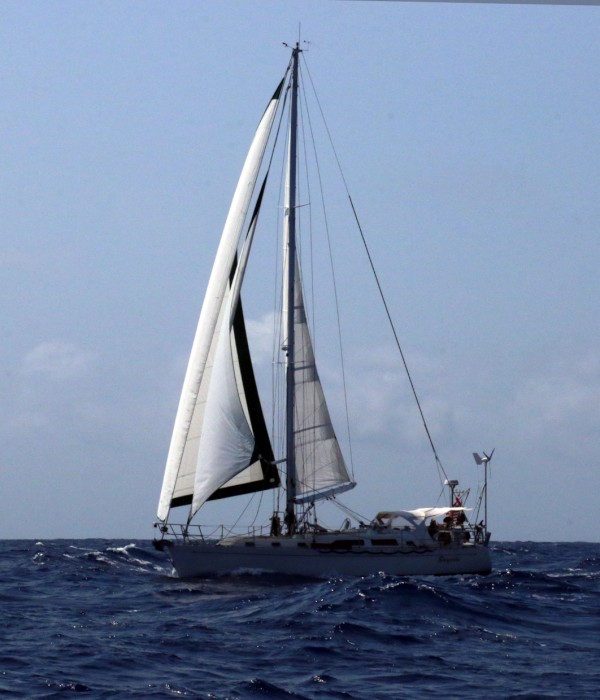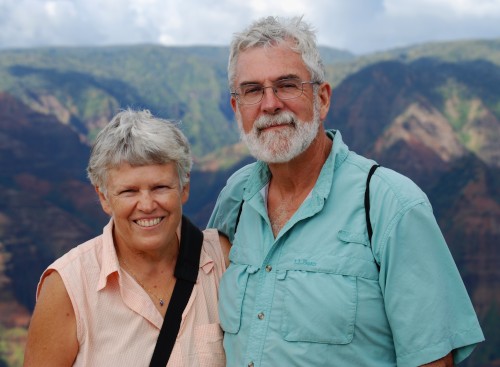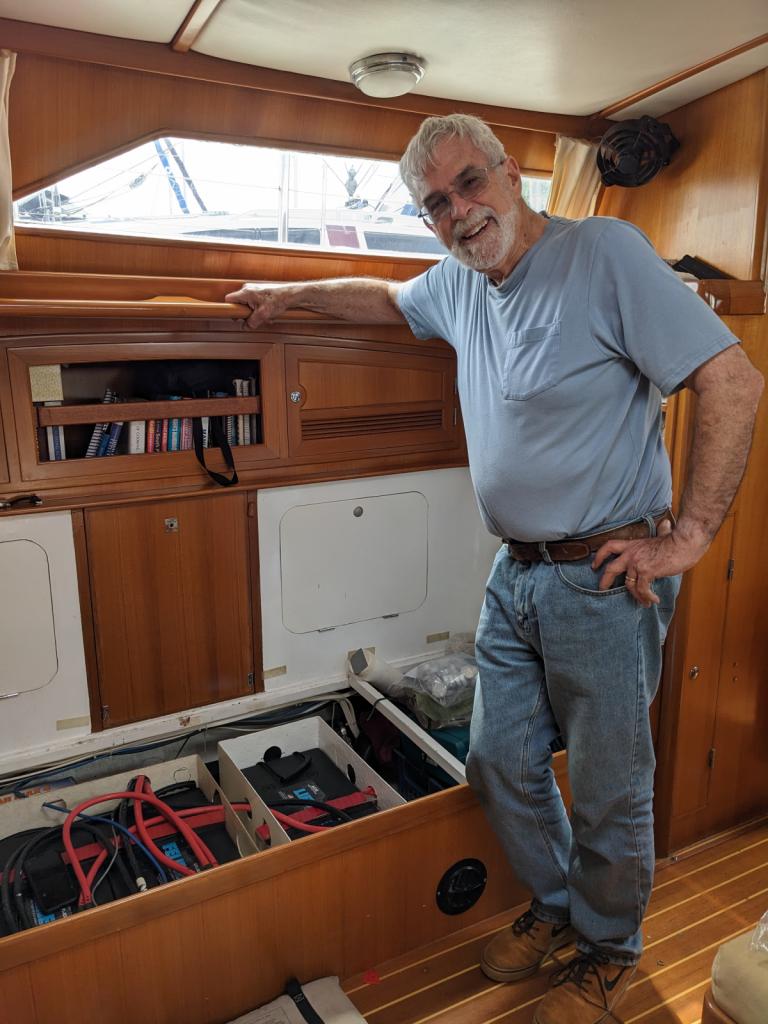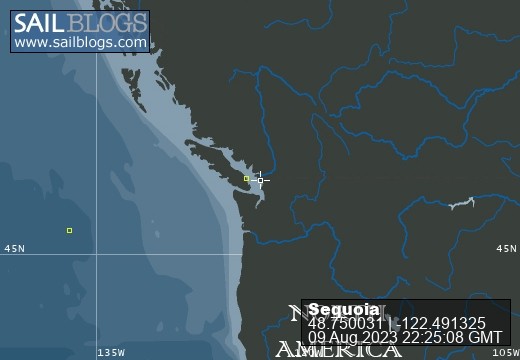
Sequoia Changing Latitudes
30 August 2023 | St. Helens, Oregon
09 August 2023 | Bellingham, Washington
21 July 2023 | Boat: Bellingham; C&B: Scappoose
10 July 2023 | Egmont, Sunshine Coast, B.C., Canada
02 July 2023 | Walsh Cove, Desolation Sound, B.C., Canada
23 June 2023 | Westview/Powell River B.C.
18 June 2023 | Ganges, Saltspring Island, B.C., Canada
22 June 2019 | Scappoose, Oregon
27 May 2019 | Back home in Oregon
09 May 2019 | Villas Alturas Hotel, Costa Rica
02 May 2019 | San Vito, Costa Rica
23 April 2019 | Golfito, Costa Rica
11 April 2019 | Panama City, Panama
04 April 2019 | Shelter Bay Marina, Colon, Panama
22 March 2019 | Jamaica
11 March 2019 | Zar Par Marina, Boca Chica, Dominican Republic
18 February 2019 | Culebra Island, Puerto Rico
31 January 2019 | Simpson Bay Lagoon, Sint Maarten
21 January 2019 | Nelson's Dockyard, English Harbour, Antigua
04 January 2019 | Portsmouth, Dominica
Panama - the Atlantic Side
04 April 2019 | Shelter Bay Marina, Colon, Panama
Barbara Johnston | Hot and windy

Our passage from Jamaica to Panama took four days, just as planned. At this time of year the winds and waves are strong off of Colombia. Even though our route would not take us close to Colombia, that didn't stop the large waves from reaching us. So it was a fairly rolly passage: a decent amount of wind, and too much wave action, especially during the last 24 hours. We had many of our glasses and other dishes packed in socks, but that didn't stop the clank-clank that happened with every wave. We have a couple of wine bottles stored under the floorboards, and I think those were the worst. Their bubble wrap must have come off, so they clink gently together with every movement of the boat. (Boat project #1, for tomorrow: find the clinking bottles and re-stow in a silent way. Or maybe just drink the contents.)
Once again we made the passage with George and Sue Stonecliffe aboard Julia Max. Julia Max's hull speed is just a little bit slower than Sequoia's so they left about three hours ahead of us from Port Antonio, Jamaica. For the first day or so we both proceeded at about the same speed, but mid-passage there was a wind change and our sail set became more efficient. At 8 knots or more of speed, we quickly passed Julia Max, and each boat got some great pictures of the other (it's pretty hard to get mid-passage photos - so unusual to pass close by each other). (See photo at the top of this post). We made such progress that ultimately we had to take desperate measures to slow down so we wouldn't arrive in the middle of the night. We reefed the main down to three reefs, dropped back to staysail, then reefed staysail, then no jib at all, until we were only making 3-4 knots. Unfortunately with such shortened sails the rolling became worse, and the last 24 hours was not fun. Fortunately, all the pre-made food was helpful, and I didn't have to deal with cutting up round objects on a counter sloped at 30 degrees.
For entertainment or pathos, a barn swallow showed up on the boat when we were about 80 miles from the end of the passage. We were amazed at how a barn swallow could fly that distance, but obviously birds are able to do much longer annual migrations. The poor little bird perched precariously on rounded surfaces, and before long was inside the boat, where he took up residence. We thought he'd left in the late afternoon. But in the dark of the middle of the night I felt for a handrail and got instead a piece of moving fluff. I'm sure it startled us both. In the morning there was no sign of him, just a couple of small feathers and a pile of bird poop. (Which does not come out of the cushions easily, I'm sorry to report).
The last 24 hours the ship traffic increased substantially. We passed a number of tankers headed for Houston, and several 800 foot long, 140 foot wide container ships loaded as high as we've ever seen with shipping containers. Several times the ships were heading right at us, on a reciprocal course, and we had to change directions to allow them to blast past. As we approached the entrance to Limon Bay (the canal approach), dozens of giant freighters were anchored and others were moving in various directions. A way was open for us, though, to go straight ahead, past the breakwaters and into the bay. We took the sails down and found our way into Shelter Bay Marina - easy and straightforward.
The marina is located on the former Fort Sherman military base. The US turned the base over to the Panamanian government in 1999, and it appears about the only thing that was done was to create the marina. Dozens of other buildings are in the vicinity; they've all been looted and the jungle is growing around them, on top of them and through them. It's about 3 or 4 miles by road through the jungle to reach the perimeter gate, and then at least that far again to reach the nearest decent grocery store in Colón. We took the marina bus into Colón to the Rey grocery store. The roads are simply appalling, full of potholes. Once you get into the City of Colón, it becomes apparent how run down everything is. Old buildings, with small trees growing out of the roof, missing windows, peeling paint and sagging balconies are nevertheless festooned with satellite dishes. The Rey grocery store is in a run down shopping center. Most shops, including Rey, do not have signs; they just have peeling paint. You have to look in through the door to figure out what's there. There are areas of the city which, we are advised, are very dangerous. This includes the area around the bus station and the train station. There is construction going on, but it appears to be primarily to repair the worst of the decaying infrastructure, and not for any new construction.
By contrast, we crossed over the Gatun locks, and everything there appears to be in good condition. The 1914 original construction is still in good shape and in full operation. New, bigger locks opened in 2016, and now the canal can accommodate ships up to 1200 feet long and 160 feet wide.
Before we got here, we had contacted a canal agent, Erick, to set up our transit of the canal. In addition to the usual immigration and customs papers, there were a lot of additional hoops to navigate. First, an official inspector had to come inspect and measure our boat. We didn't know when exactly the inspection would happen, but it was clear that we couldn't leave the boat, because if we missed the inspector's visit, we'd go to the bottom of the list. We finally saw the inspector on Friday (we had arrived Tuesday), and we have been given the date of April 7 for our transit through the canal. One or two days before then we will receive a detailed email with all the instructions, plus a delivery of four lines and many large fenders.
By then we'll need to know whether we should hire line handlers - we're supposed to have four, and it's sometimes possible to use other yachters or friends as line handlers. In addition, we will have an official "transit advisor". The TA is someone like a pilot with knowledge of all conditions and procedures who will "advise" us as to where to go and what to do. We are instructed that we must have "good food" for the advisor. No cans, no sandwiches. And we must provide bottled water. No tank water. (Our mission to avoid plastic bottles for environmental reasons has hit a temporary wall...)
The facilities at the marina are good - a swimming pool, nice restaurant, small grocery, small chandlery and a laundry. But after a couple of days, boredom does set in. So we decided to take the bus over to Panama City (on the Pacific side of Panama) and see some sights. Our friendly marina bus driver, Ranger, took us right to the bus station, with clear, insistent advice not to dawdle, and get right on that bus, over there. It was a nice enough bus, and it didn't leave until every seat was full. Then for the next 10 miles the bus made numerous stops, picking up more passengers until the aisle was completely crammed full of standing room passengers. The TV screen at the front was playing a Christian football movie, which was completely full of violent language and violent football footage, interspersed with prayer meetings. The volume was turned up to blastissimo and there was no escaping. As we arrived in Panama City, Billy Graham was giving some kind of closing sermon.
(On the way back to Colón the next day, the movie was Apocalypto, an extremely violent Mel Gibson movie about pre-Columbian Central American tribes torturing, enslaving and slaughtering each other. At least the sound wasn't turned up quite as loud. Yikes! I'm not a fan of Panamanian bus drivers' taste in movies.)
Upon arriving in Panama City, the first thing we did was catch a taxi to the Miraflores locks visitor's center. We wanted to have a look at sailboats going through the locks, just to look at the procedures and evaluate the degree of turbulence those boats were experiencing. We've been told that due to the huge volume of water passing through the fill/drain tunnels of these locks, there can be a high degree of dangerous turbulence. We were able to watch as a rafted-together "nest" of three sailboats proceeded down through the two lock chambers in the Miraflores locks. We didn't see much evidence of turbulence, and they did have to wait a mighty long time for the tanker behind them to get positioned for the lock-through.
We spent the night in a nice hotel in the Casco Viejo section of Panama City. Lots of renovation is going on in this district of substantial old apartment buildings. On any block, you're likely to see a beautifully renovated building side by side with a rubble-filled lot, and the shell of another old building being held up by substantial bracing blocking the adjacent sidewalk. We enjoyed eating in a new restaurant called "Lo Que Hay" (Whatever's Available) where the flavors were unexpected and different, but quite delicious. That evening, and the next morning, we walked along the streets and enjoyed the occasional view into the interior of buildings, or the rubble of one that didn't quite make it.
We took in parts of several museums and viewed the murals of Van Ingen documenting the canal construction, and charcoal drawings that may have been preliminary sketches for the murals, at the Canal Administration Building. All in all a good visit to an interesting City, and I have no doubt there is plenty more to see. We'll have a second chance at it after we make our canal transit this coming Sunday and Monday.
So we're back now to the Shelter Bay Marina, with a long list of chores to do before our transit. Chief on my list is making that "good food" that the Transit Advisor needs. I'll do a beef stew and a chicken/rice, both heavy on the meat. We also need to rearrange our stuff so that we have comfortable sleeping spaces for six (us plus the four line handlers). And of course, laundry, cleaning and various other boat-keeping chores. Tomorrow Craig will sign on as temporary crew/linehandler aboard Julia Max, helping George and Sue Stonecliffe make the transit tomorrow and Saturday. This will be a great way to preview the whole process.
If you'd like to catch a glimpse of us locking through on Sunday and Monday, there are two webcams. We'll expect to go through the Gatun locks on Sunday, April 7, between 3 pm and 6 pm local time (UTC minus 6 or same as Mountain Daylight Time), and through the Miraflores locks sometime Monday afternoon. You can probably find out where we are by checking this website. If that doesn't take you right to a map showing our boat, try inputting our MMSI number into the search box. Our MMSI number is 366806740.
Best wishes to all - See you on the other side!
Craig & Barbara Johnston
S/V Sequoia
Once again we made the passage with George and Sue Stonecliffe aboard Julia Max. Julia Max's hull speed is just a little bit slower than Sequoia's so they left about three hours ahead of us from Port Antonio, Jamaica. For the first day or so we both proceeded at about the same speed, but mid-passage there was a wind change and our sail set became more efficient. At 8 knots or more of speed, we quickly passed Julia Max, and each boat got some great pictures of the other (it's pretty hard to get mid-passage photos - so unusual to pass close by each other). (See photo at the top of this post). We made such progress that ultimately we had to take desperate measures to slow down so we wouldn't arrive in the middle of the night. We reefed the main down to three reefs, dropped back to staysail, then reefed staysail, then no jib at all, until we were only making 3-4 knots. Unfortunately with such shortened sails the rolling became worse, and the last 24 hours was not fun. Fortunately, all the pre-made food was helpful, and I didn't have to deal with cutting up round objects on a counter sloped at 30 degrees.
For entertainment or pathos, a barn swallow showed up on the boat when we were about 80 miles from the end of the passage. We were amazed at how a barn swallow could fly that distance, but obviously birds are able to do much longer annual migrations. The poor little bird perched precariously on rounded surfaces, and before long was inside the boat, where he took up residence. We thought he'd left in the late afternoon. But in the dark of the middle of the night I felt for a handrail and got instead a piece of moving fluff. I'm sure it startled us both. In the morning there was no sign of him, just a couple of small feathers and a pile of bird poop. (Which does not come out of the cushions easily, I'm sorry to report).
The last 24 hours the ship traffic increased substantially. We passed a number of tankers headed for Houston, and several 800 foot long, 140 foot wide container ships loaded as high as we've ever seen with shipping containers. Several times the ships were heading right at us, on a reciprocal course, and we had to change directions to allow them to blast past. As we approached the entrance to Limon Bay (the canal approach), dozens of giant freighters were anchored and others were moving in various directions. A way was open for us, though, to go straight ahead, past the breakwaters and into the bay. We took the sails down and found our way into Shelter Bay Marina - easy and straightforward.
The marina is located on the former Fort Sherman military base. The US turned the base over to the Panamanian government in 1999, and it appears about the only thing that was done was to create the marina. Dozens of other buildings are in the vicinity; they've all been looted and the jungle is growing around them, on top of them and through them. It's about 3 or 4 miles by road through the jungle to reach the perimeter gate, and then at least that far again to reach the nearest decent grocery store in Colón. We took the marina bus into Colón to the Rey grocery store. The roads are simply appalling, full of potholes. Once you get into the City of Colón, it becomes apparent how run down everything is. Old buildings, with small trees growing out of the roof, missing windows, peeling paint and sagging balconies are nevertheless festooned with satellite dishes. The Rey grocery store is in a run down shopping center. Most shops, including Rey, do not have signs; they just have peeling paint. You have to look in through the door to figure out what's there. There are areas of the city which, we are advised, are very dangerous. This includes the area around the bus station and the train station. There is construction going on, but it appears to be primarily to repair the worst of the decaying infrastructure, and not for any new construction.
By contrast, we crossed over the Gatun locks, and everything there appears to be in good condition. The 1914 original construction is still in good shape and in full operation. New, bigger locks opened in 2016, and now the canal can accommodate ships up to 1200 feet long and 160 feet wide.
Before we got here, we had contacted a canal agent, Erick, to set up our transit of the canal. In addition to the usual immigration and customs papers, there were a lot of additional hoops to navigate. First, an official inspector had to come inspect and measure our boat. We didn't know when exactly the inspection would happen, but it was clear that we couldn't leave the boat, because if we missed the inspector's visit, we'd go to the bottom of the list. We finally saw the inspector on Friday (we had arrived Tuesday), and we have been given the date of April 7 for our transit through the canal. One or two days before then we will receive a detailed email with all the instructions, plus a delivery of four lines and many large fenders.
By then we'll need to know whether we should hire line handlers - we're supposed to have four, and it's sometimes possible to use other yachters or friends as line handlers. In addition, we will have an official "transit advisor". The TA is someone like a pilot with knowledge of all conditions and procedures who will "advise" us as to where to go and what to do. We are instructed that we must have "good food" for the advisor. No cans, no sandwiches. And we must provide bottled water. No tank water. (Our mission to avoid plastic bottles for environmental reasons has hit a temporary wall...)
The facilities at the marina are good - a swimming pool, nice restaurant, small grocery, small chandlery and a laundry. But after a couple of days, boredom does set in. So we decided to take the bus over to Panama City (on the Pacific side of Panama) and see some sights. Our friendly marina bus driver, Ranger, took us right to the bus station, with clear, insistent advice not to dawdle, and get right on that bus, over there. It was a nice enough bus, and it didn't leave until every seat was full. Then for the next 10 miles the bus made numerous stops, picking up more passengers until the aisle was completely crammed full of standing room passengers. The TV screen at the front was playing a Christian football movie, which was completely full of violent language and violent football footage, interspersed with prayer meetings. The volume was turned up to blastissimo and there was no escaping. As we arrived in Panama City, Billy Graham was giving some kind of closing sermon.
(On the way back to Colón the next day, the movie was Apocalypto, an extremely violent Mel Gibson movie about pre-Columbian Central American tribes torturing, enslaving and slaughtering each other. At least the sound wasn't turned up quite as loud. Yikes! I'm not a fan of Panamanian bus drivers' taste in movies.)
Upon arriving in Panama City, the first thing we did was catch a taxi to the Miraflores locks visitor's center. We wanted to have a look at sailboats going through the locks, just to look at the procedures and evaluate the degree of turbulence those boats were experiencing. We've been told that due to the huge volume of water passing through the fill/drain tunnels of these locks, there can be a high degree of dangerous turbulence. We were able to watch as a rafted-together "nest" of three sailboats proceeded down through the two lock chambers in the Miraflores locks. We didn't see much evidence of turbulence, and they did have to wait a mighty long time for the tanker behind them to get positioned for the lock-through.
We spent the night in a nice hotel in the Casco Viejo section of Panama City. Lots of renovation is going on in this district of substantial old apartment buildings. On any block, you're likely to see a beautifully renovated building side by side with a rubble-filled lot, and the shell of another old building being held up by substantial bracing blocking the adjacent sidewalk. We enjoyed eating in a new restaurant called "Lo Que Hay" (Whatever's Available) where the flavors were unexpected and different, but quite delicious. That evening, and the next morning, we walked along the streets and enjoyed the occasional view into the interior of buildings, or the rubble of one that didn't quite make it.
We took in parts of several museums and viewed the murals of Van Ingen documenting the canal construction, and charcoal drawings that may have been preliminary sketches for the murals, at the Canal Administration Building. All in all a good visit to an interesting City, and I have no doubt there is plenty more to see. We'll have a second chance at it after we make our canal transit this coming Sunday and Monday.
So we're back now to the Shelter Bay Marina, with a long list of chores to do before our transit. Chief on my list is making that "good food" that the Transit Advisor needs. I'll do a beef stew and a chicken/rice, both heavy on the meat. We also need to rearrange our stuff so that we have comfortable sleeping spaces for six (us plus the four line handlers). And of course, laundry, cleaning and various other boat-keeping chores. Tomorrow Craig will sign on as temporary crew/linehandler aboard Julia Max, helping George and Sue Stonecliffe make the transit tomorrow and Saturday. This will be a great way to preview the whole process.
If you'd like to catch a glimpse of us locking through on Sunday and Monday, there are two webcams. We'll expect to go through the Gatun locks on Sunday, April 7, between 3 pm and 6 pm local time (UTC minus 6 or same as Mountain Daylight Time), and through the Miraflores locks sometime Monday afternoon. You can probably find out where we are by checking this website. If that doesn't take you right to a map showing our boat, try inputting our MMSI number into the search box. Our MMSI number is 366806740.
Best wishes to all - See you on the other side!
Craig & Barbara Johnston
S/V Sequoia
Comments
| Vessel Name: | Sequoia |
| Vessel Make/Model: | Outbound 44 |
| Hailing Port: | Portland, Or |
| Crew: | Craig & Barbara Johnston |
| About: | |
| Extra: |
Sequoia's Photos - Main
Who we are...

Who: Craig & Barbara Johnston
Port: Portland, Or



